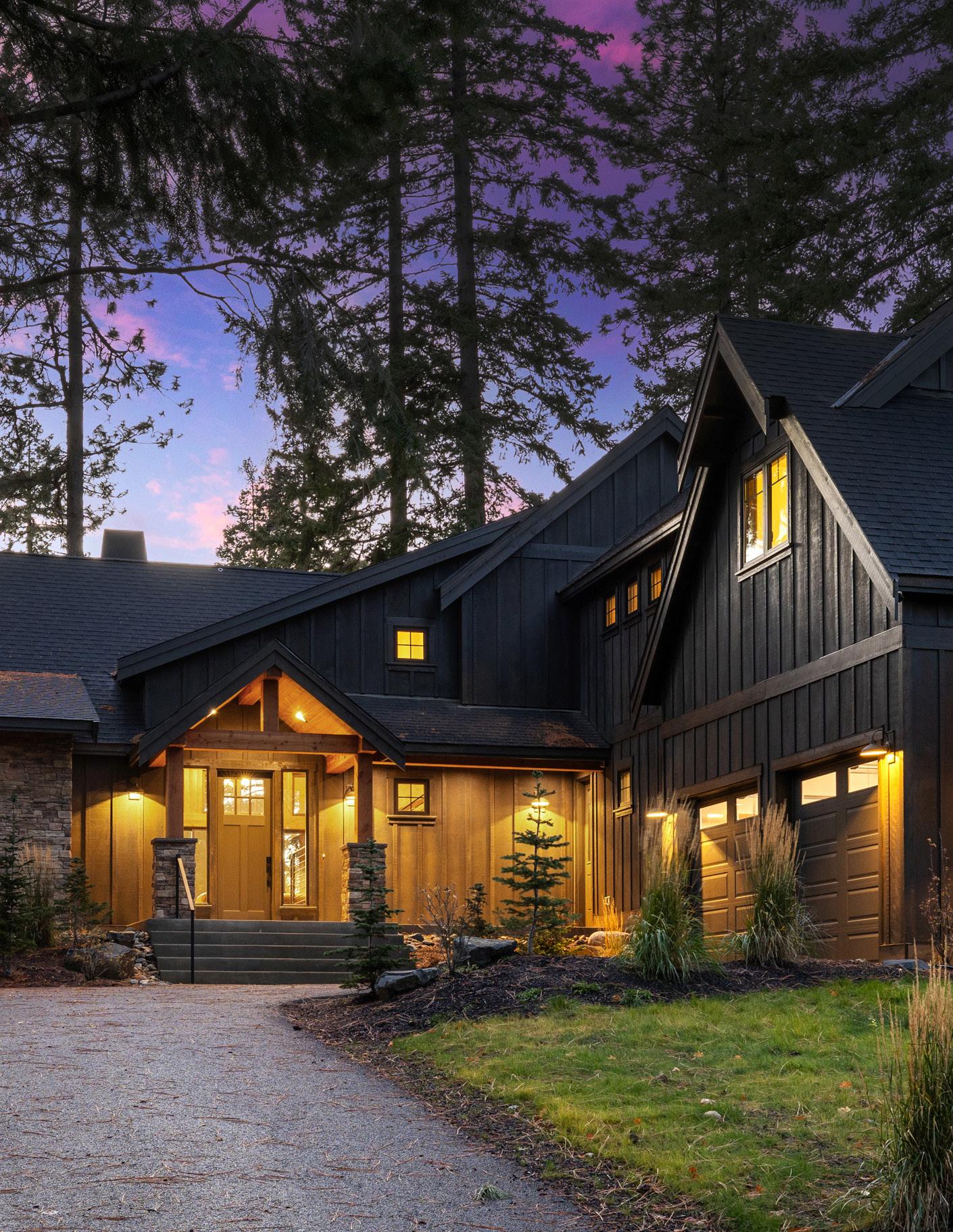
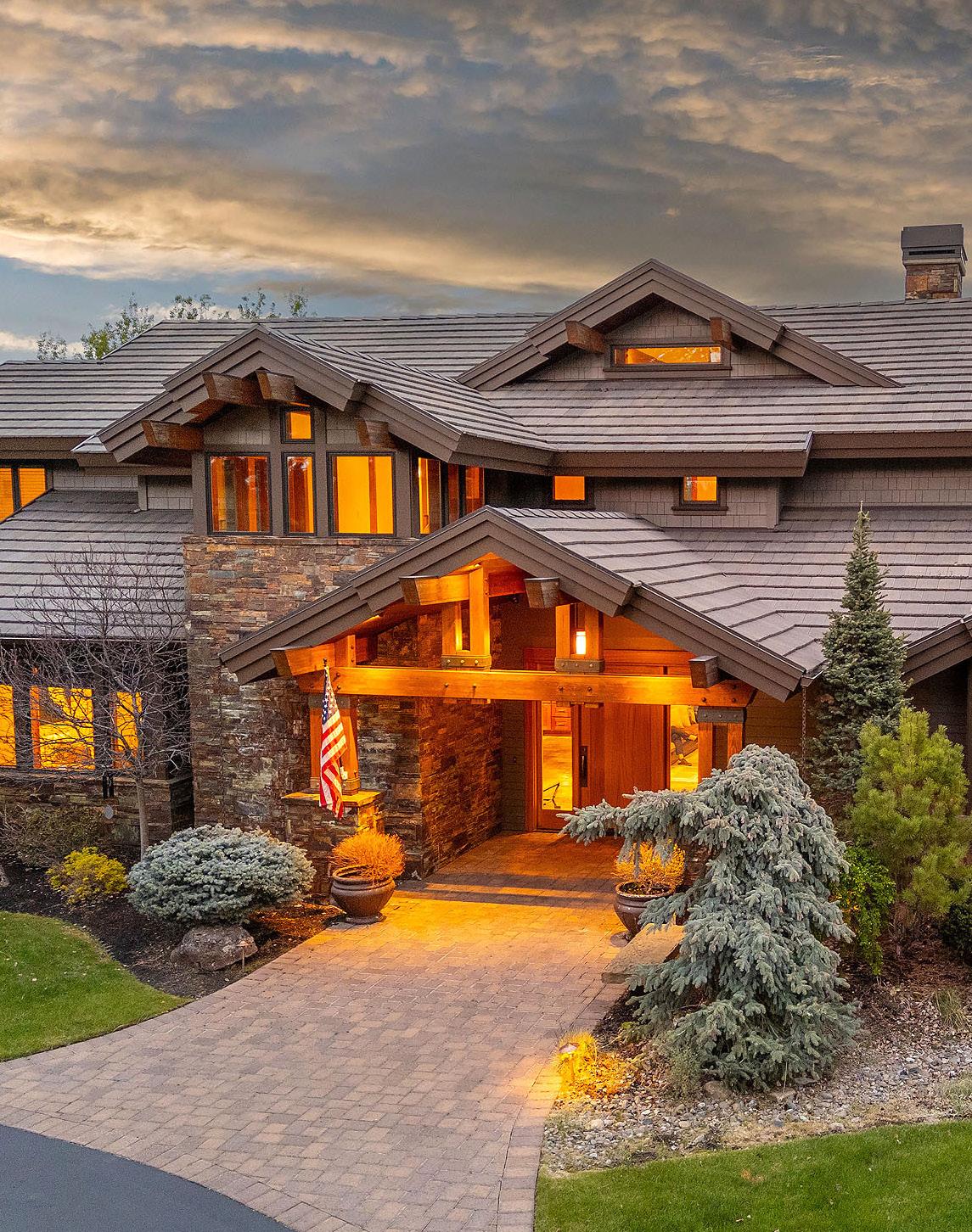



Across the Pacific Northwest, the luxury real estate market is seeing a meaningful shift and inventory is notably higher in nearly every market we serve. This increase is giving buyers more options than they’ve had in recent years, creating a healthy, balanced landscape across Washington, Oregon, and Idaho. While the market hasn’t returned to the frenzied pace of years past, many areas are experiencing healthy activity levels, particularly in desirable luxury destinations where well-prepared homes continue to move quickly.
With more properties available, the summer season presents an exceptional window of opportunity, whether you’re searching for your next home, a vacation getaway, or preparing to bring your property to market. Increased inventory means buyers have more selection to choose from, while motivated sellers can benefit from working with a luxury specialist to position the listing to stand out in this more competitive environment.
Wherever your next move takes you, our John L. Scott luxury broker associates are ready to guide you with expertise and care.
We hope you enjoy the latest edition of our Luxury Market Trends magazine!
J.Lennox Scott Chairman and CEO
BY JOHN L. SCOTT
Exceptional Homes is John L. Scott’s luxury real estate brand. Together with our luxury broker associates, our global partners at Luxury Portfolio International, and our support staff, we strive to provide concierge-level service by putting clients first.
We can ensure you that we are here for you and your family. The real estate market is fast-paced and ever changing, but what hasn’t changed, is our commitment to exceed your expectations when you are ready to buy or sell your home.
On The Cover: Offered at $8,900,000 | johnlscott.com/80981

John L. Scott is a founding member of the international organization Leading Real Estate Companies of the World®, as well as their luxury division, Luxury Portfolio International.
Founded in 1931, John L. Scott operates over 100 offices with over 3,000 agents throughout WA, OR, ID & CA

A global community of over 565 real estate companies awarded membership based on rigorous standards for service and performance
Member Firms BY THE NUMBERS
80% of applicants to this network are turned down
John L. Scott’s luxury brand, providing our agents with tools and data to help each and every client live their luxury

The luxury division of LeadingRE & the largest global network of the most powerful, independent luxury firms
4,800 Offices Worldwide
Total Inventory
$58 Billion


Curious about luxury trends in your neighborhood? See what some of our John L. Scott luxury experts had to say about the market in their area.
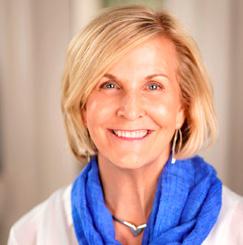
Robin Root James Bellevue, WA
In the second quarter of 2025, Bellevue’s luxury housing market demonstrated a remarkable sense of resilience amid prevailing economic uncertainty. Across King County, active listings surged—rising by roughly 50–70% year-over-year. Solid luxury listings above $2 million, West Bellevue saw new listings jump by 54% compared to the previous spring, with active luxury listings reaching over 100 properties in April and averaging nearly 7.7 months of supply.
Despite this abundance, prices held steady—and even appreciated—highlighting a market where quality still commands a premium. In King County overall, median prices grew about 5% year-over-year to around $1.03 M in April, with about two-thirds of homes selling at or above list price. Luxury-tier homes in Bellevue mirrored this trend, regularly closing above $2 million, underscoring resilient buyer appetite for Åwell-positioned, move-in-ready properties.
This surge in supply means buyers have more choices than in recent years—making it essential for sellers to elevate their listings. High-demand expectations now include professional staging, fresh paint, spotlessly clean interiors, washed windows, and expected pre-inspections. Buyers are increasingly specifying that they want all defects remedied upfront, so there’s nothing to deter them from visualizing the property as their own.
On the buyer side, being pre-approved and ready to act quickly remains critical, even as the market shows signs of stabilization. The abundance of choice brings negotiating power—but the best homes still go fast. Trends show that buyers are prioritizing lifestyle-enhancing features over square footage alone: premium kitchens, smart-home tech, wellness amenities, and quality outdoor spaces are gaining prominence. In effect, they’re purchasing an experience as much as a home.
Looking ahead, the key opportunity lies in increased inventory providing buyers with alternatives and potential leverage. The challenge, however, will be managing pricing expectations, especially as sellers test the upper bounds of what the market will bear. Those sellers who invest in strategic staging, precise pricing tied to current data, and compelling presentation will be best positioned to succeed. Buyers who come prepared—with financing in place and clarity on what truly adds value—will find attractive options in this shifting luxury landscape.

Sam Savage Snohomish County, WA
In Q2, the luxury real estate market in Washington saw a lot of demand, particularly in areas like Seattle and Bellevue. Despite some stabilizing prices, homes in the high-end market were still moving quickly, with competitive bidding and limited inventory keeping things lively for buyers and sellers alike.
In the second half of 2025, luxury buyers in Washington may find opportunities in slightly more balanced market conditions, with less intense competition and potentially better pricing negotiations. However, the challenge will be navigating the still-tight inventory and interest rate fluctuations, which could impact purchasing power. For sellers, the opportunity lies in attracting affluent buyers looking for unique, high-quality homes, but the challenge will be pricing strategically amid any market shifts.
luxury homebuyers are increasingly prioritizing wellness and sustainability—think in-home spas, saunas, cold plunge pools, and energy-efficient smart home systems. There’s also a growing demand for multi-functional spaces like home offices, gyms, and outdoor entertainment areas with panoramic views. I think some of these trends from Covid-19 and making the absolute most of one’s home.
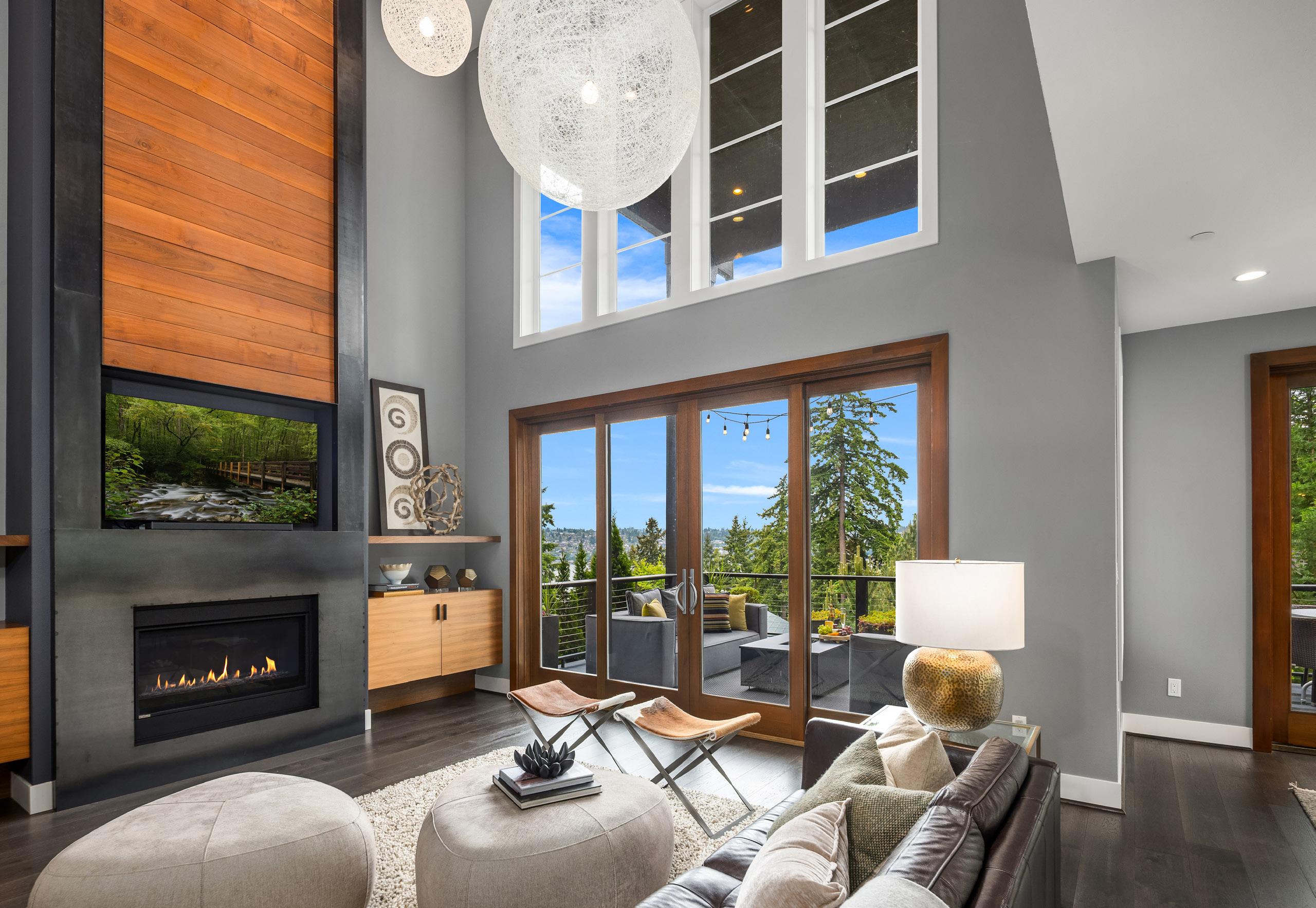

On average, Jackson County residential listings that sold over $1M went pending about 20 days faster, and closed for 4.89% closer to their original list price compared to Q2 of 2024. While average original listing prices were down 5.54%, closing prices actually increased by 3.43% year-over-year. Ultimately, more conservative pricing appears to be paying dividends to sellers in our market.
Agents who serve both high-end buyers and sellers should be able to inform their clients of upcoming and pocket listings, perform pricing analyses to help determine fair market value, and offer first-hand experience in navigating contingencies. Sellers who proactively provide documentation of their improvements and maintenance may demonstrate their stewardship of a property, mitigate typical buyer concerns, galvanize offer confidence, and pave the way for a smooth escrow.
We see a big opportunity for sellers who are able to carry financing, even for shorter terms, as interest rates of traditional lending institutions remain higher than many buyers find palatable. Offers contingent upon the sale of another property can be risky, but may be worth considering if all parties are able to demonstrate confidence in pricing and local market conditions.
Anecdotally, we noticed a trend of high-end buyers exiting the stock market earlier this year and putting their money into real estate. We believe turn-key or move-in-ready properties will continue to command top-dollar, as a large proportion of buyers in our market have yet to establish working relationships with trusted contractors and service providers.
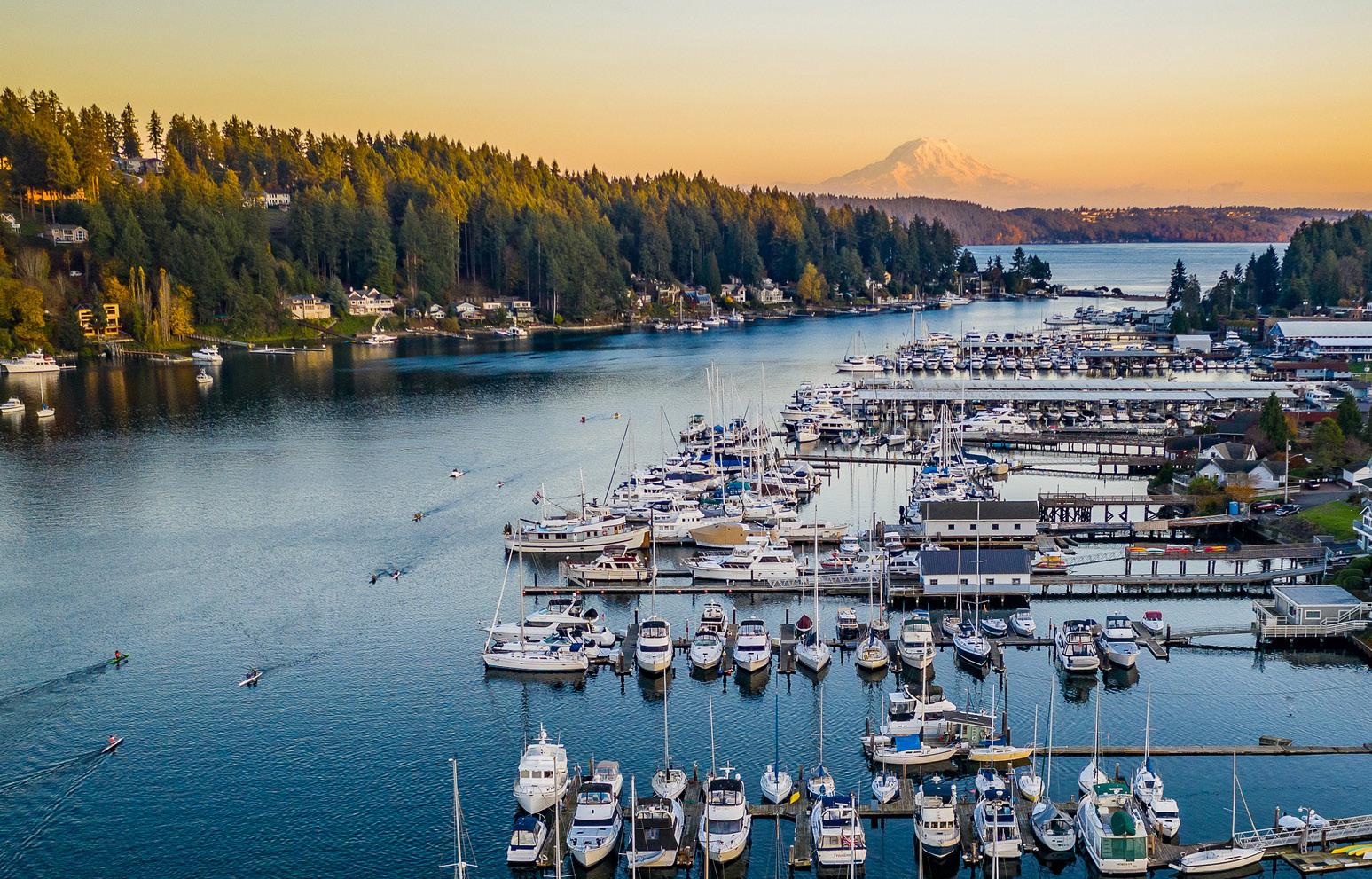
Luxury real estate across the Puget Sound region showed steady movement in the second quarter, supported by elevated inventory levels that continue to offer buyers more choice than in recent years. While overall closed sales were slightly lower in some areas, Seattle and select parts of the Eastside saw a noticeable uptick in transaction volume, reflecting healthy buyer engagement in well-positioned segments.
The Eastside and West Bellevue remained competitive, with average prices holding strong, especially in West Bellevue, where the average sales price exceeded $4.7 million.
This evolving landscape, with more homes available and many selling quickly, offers both buyers and sellers an opportunity to engage the market with confidence and clarity.





Mercer Island’s luxury market remains competitive, with homes selling twice as quickly as last year despite a modest decline in overall sales and pricing compared to 2024.


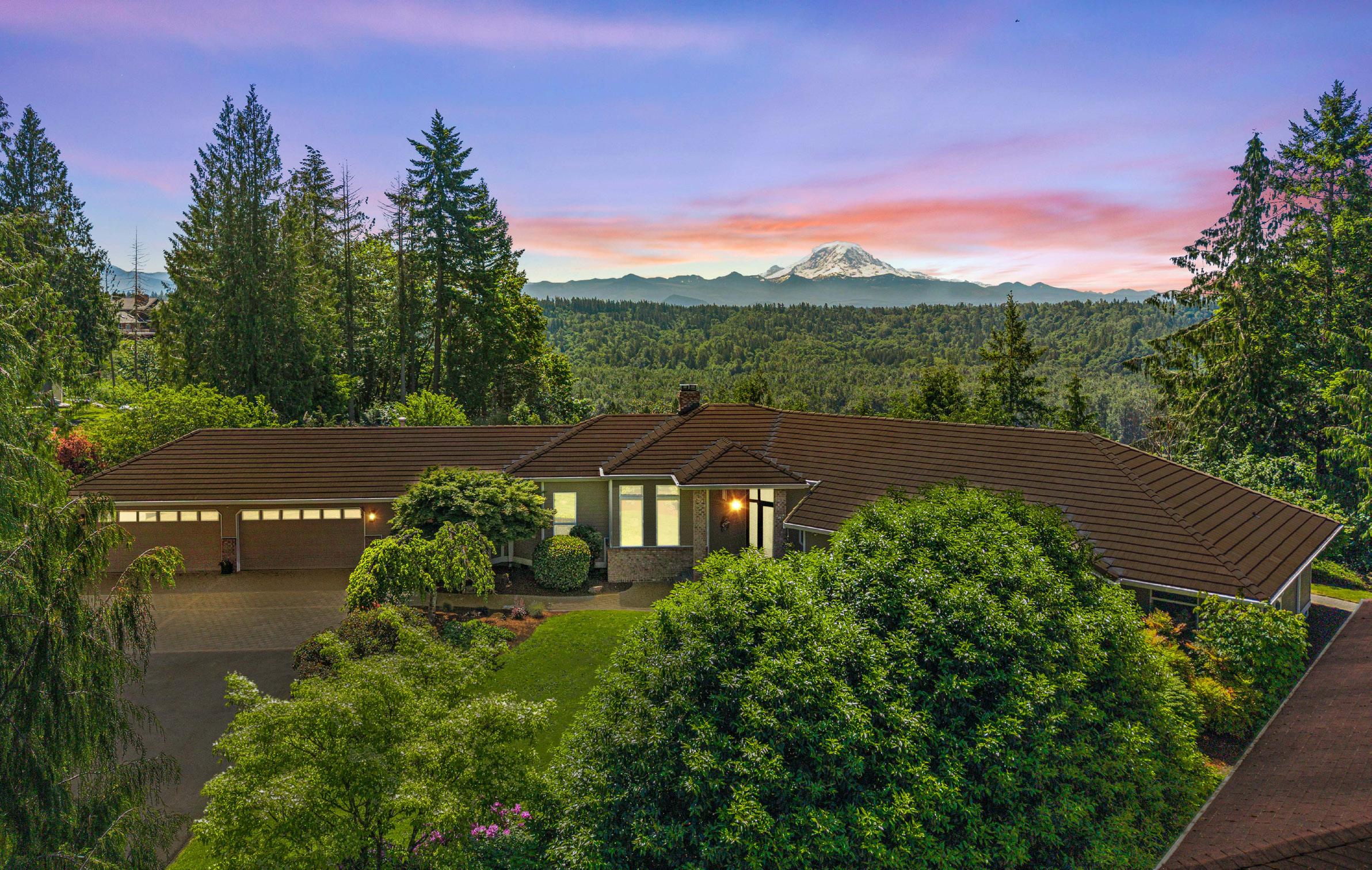
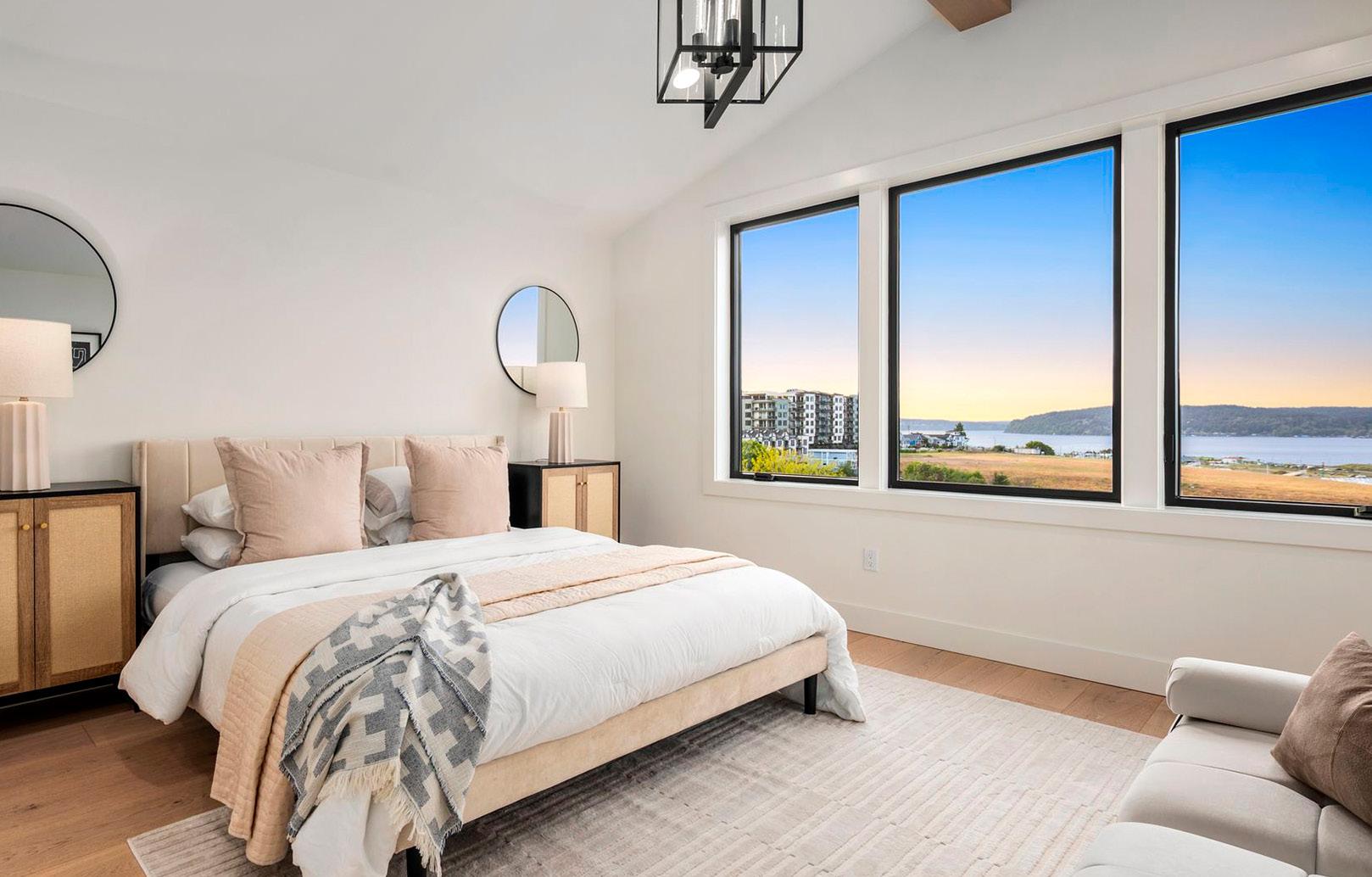
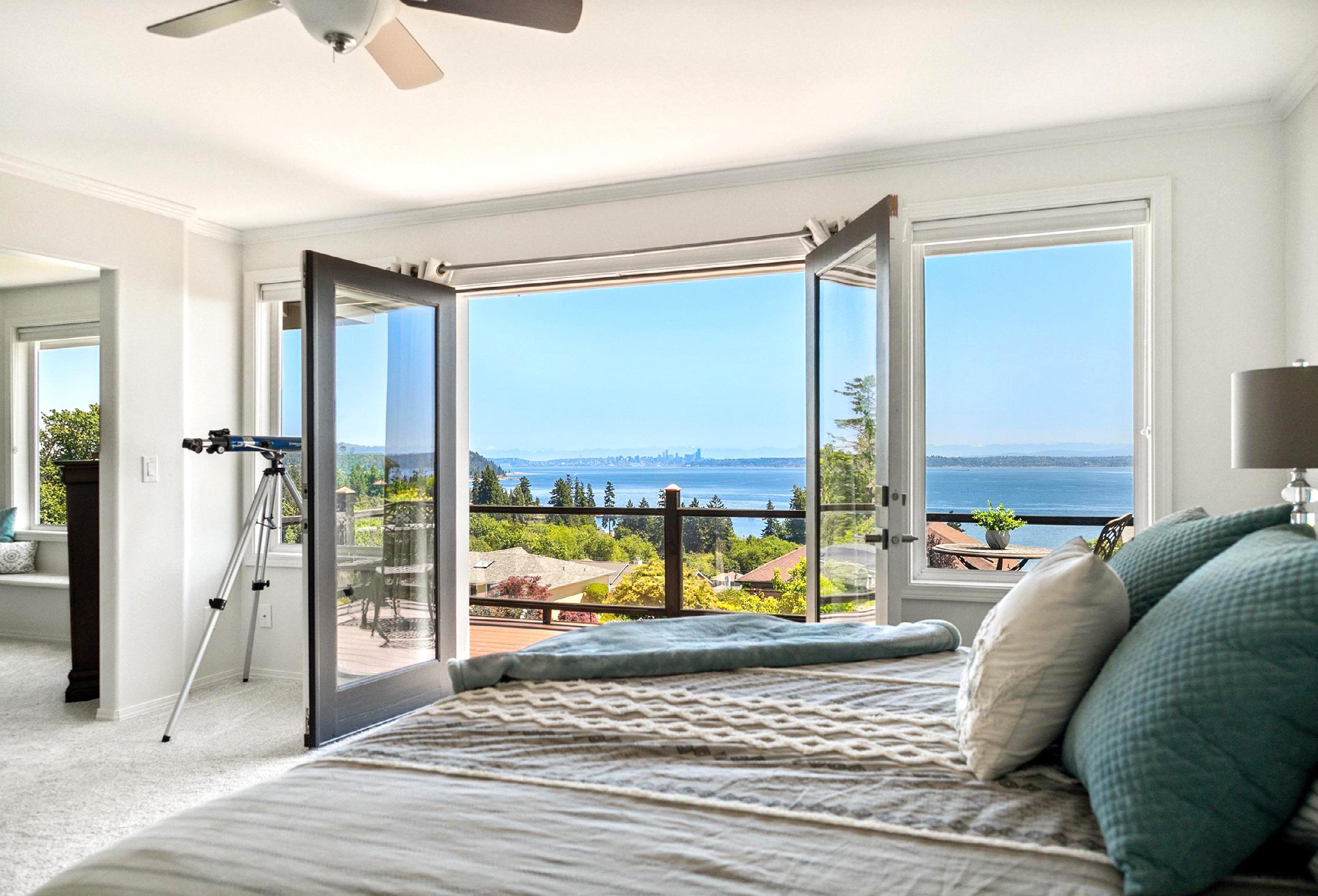

Bainbridge Island’s luxury market held


| johnlscott.com/66228




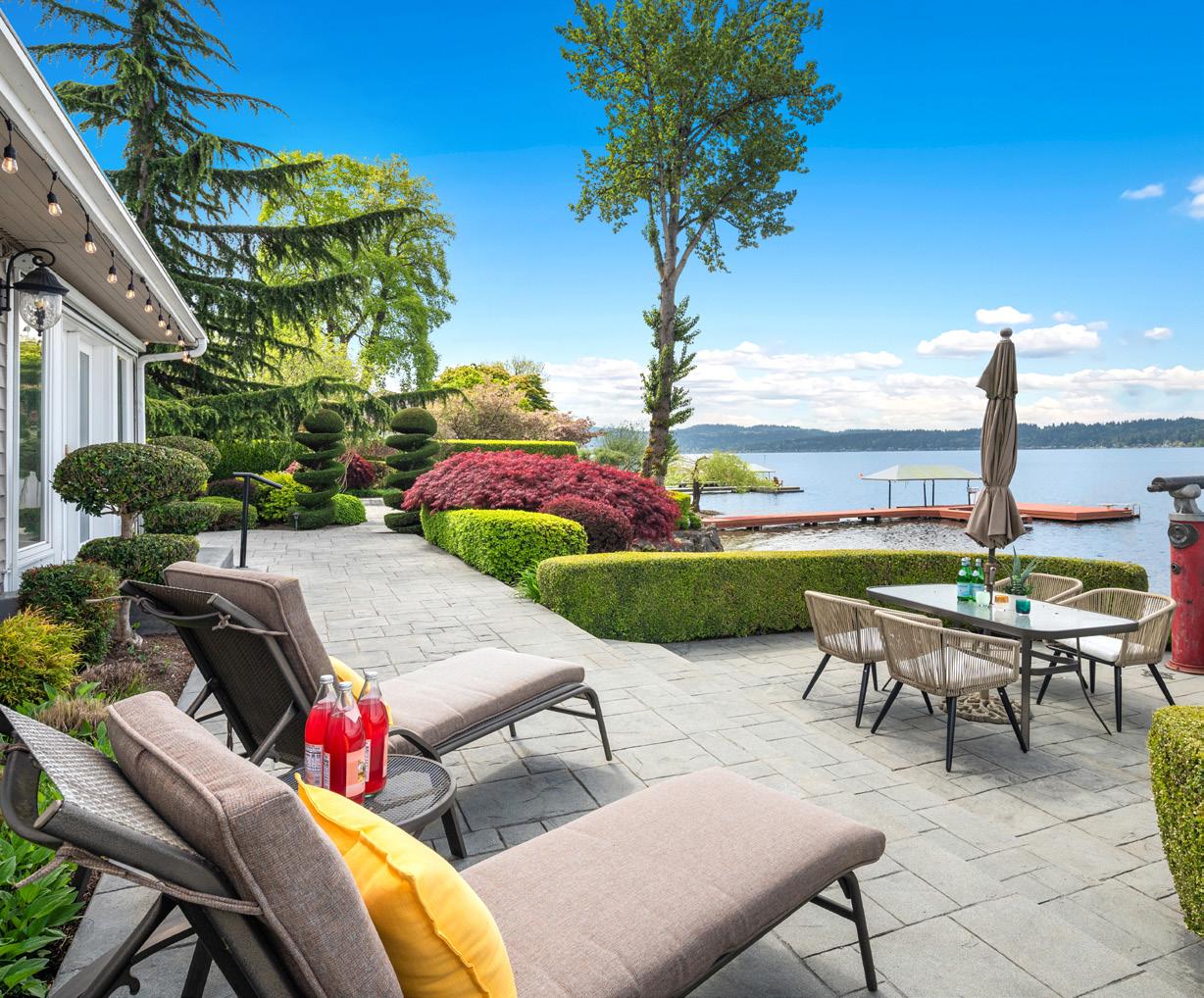


Portland, OR | $2,375,000 | johnlscott.com/37050 3112 SE 36th Ave Portland, OR 97202

The Atrium House is a rare architectural gem in the heart of the Richmond neighborhood, just blocks off trendy Division Street. This infill project by Capsule Development brings custom-quality design to the Eastside—where creativity, craftsmanship, and nature meet. This modern masterpiece features soaring ceilings, heated concrete floors, and a stunning three-story atrium. Anchoring the living space is a steel staircase, fabricated locally in Portland, spanning all three levels. The lower level boasts a cedar sauna paired with a custom steel cold plunge and shower, creating a private wellness retreat. On the main floor, the chef’s kitchen is equipped with high-end, built-in appliances from Bertazzoni and Fisher & Paykel. Throughout the home, custom cabinetry offers enduring beauty and a refined, timeless aesthetic. Luxury materials like Maori Brazilian granite slabs elevate the kitchen and baths. Upstairs, you’ll find all three bedrooms, a dedicated laundry area, and a guest bath. Each bedroom features its own balcony—perfect for enjoying fresh morning air or a relaxing evening breeze. Floor-to-ceiling windows flood the space with natural light, enhancing the open, airy feel throughout. A truly one-of-a-kind property that celebrates thoughtful design and modern living in one of Portland’s most sought-after neighborhoods.
Ciji Dieringer 503-737-5871
cijid@johnlscott.com



Mercer Island, WA | $12,988,000 | johnlscott.com/72073 4014 E Mercer Way Mercer Island, WA 98040
Exceptional NW contemporary masterpiece designed by Ross & Ralph Anderson. Nestled along the tranquil banks of coveted North Mercer Island. Through a private gate and charming path, this masterpiece showcases 80+ feet of no-bank waterfront & private covered dock. Extensive and extravagant re-envisioning, nearly every room is designed to take in the expansive views of the lake. Stunning finishes, extensive slab marble, smart steel windows, doors and captivating staircase, copper roof and fence, dream kitchen, breathtaking primary suite with spa-like bath, lake-level rec-room with a wet bar. The expansive living room with floor-to-ceiling windows leads to a gorgeous lake view. Dramatic spaces indoors & out, creating a sumptuous lifestyle opportunity.
Trung Pham
425-227-9200
trungp@johnlscott.com

The luxury markets in Eastern Washington and Idaho remained active in Q2, with Spokane County seeing a notable increase in sales and pricing, and Kootenai County maintaining steady volume with modest price growth. While days on market varied, increased inventory and healthy demand continue to define the region’s appeal.



The luxury markets across Oregon and SW Washington remained active in the second quarter, with steady sales volume and increased days on market, offering buyers more time and choice. While average prices in areas like Lake Oswego and Portland Metro softened slightly, the overall market continues to provide strong opportunities for both buyers and sellers, especially in the highly sought-after $1–3M range.



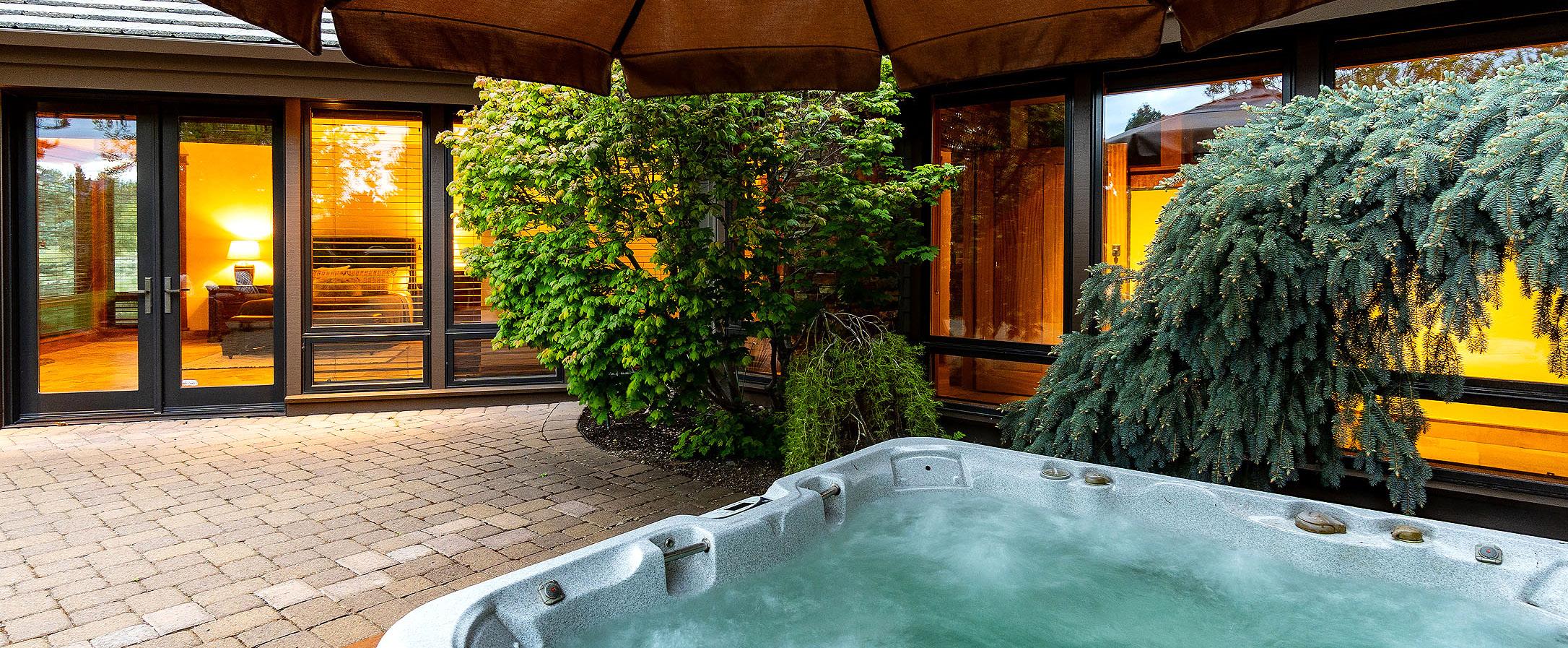
Offered at $8,900,000 | johnlscott.com/80981

Central Oregon’s luxury market saw a moderate dip in closed sales, but average prices rose year-over-year, signaling steady demand. With significantly more days on market this quarter, buyers have more time to explore the growing inventory and lifestyle opportunities the region offers.





By LISA KLEIN
A garden: cheerful flowers, swaying branches, flitting butterflies, babbling brooks, fragrant shrubs, buzzing bees, wind-rustled grasses, sun-dappled earth; tranquility, reflection, happiness, peace, celebration, union with nature, growth. It is a colorful mélange of life itself.
“I love life!” says renowned French landscape architect Louis Benech, who draws on this passion in each of his projects while creating a different version of what that means for each of his clients. “There is no common aspect to any of my gardens except that it’s like a dress. It has to fit you — that’s all.”
Whatever form it takes — sculpted-to-perfection classic French hedges, gravel and spines of the desert, rambling and wild English-style, or stoic symbols of Japan — good garden design brings out the best in the land and the people who have made their home there.
“Gardens are healing, and that’s what we’re aiming for,” says U.K.-based landscape architect Marian Boswall, author of Sustainable Garden and The Kindest Garden. “If you’re ever feeling rubbish, then being in a beautiful garden is the best possible tonic.”
Aside from the proven benefits of spending time in nature regularly, including reducing stress and anxiety, lowering blood pressure, increasing focus and creativity, and boosting the immune system, the formula for each individual or family’s garden tonic will differ based on both where they live and what it is that makes them feel in top form.
“It’s all about the client’s personality and the land’s personality and how they come together,” Ms. Boswall adds. “And that’s the most magical, when somebody feels so at home in a garden that it feels like an extension of themselves.”
Creating this terrestrial connection is no small feat. But at the root of all landscaping is, naturally, the land. “Our inspiration often comes from the regional character of the site and its history, which help ground the design in a sense of place,” says Justin Quinn, landscape architect and principal of James Doyle Design Associates (JDDA) in Greenwich, Connecticut. “It gives us the canvas to work with. We also draw heavily from the present natural features, letting the land inspire and guide the forms, spatial arrangements and overall design approach.”
This could include everything from topography, such as slopes, boulders, creeks and mature trees, to the climate and weather conditions. There is a reason traditional garden styles mimic their natural environment: pine and evergreen in Japan, succulents and tanned gravel in the Mediterranean, meadowy wildflowers and twisted hardwoods in northern Europe, palms and rubbery leaves in the tropics. Not only do plants native to an area thrive, they simply fit their surroundings.
“When we arrive on a site, we listen to the land — we take our shoes off, we meditate,” Ms. Boswall says. “We’re looking at where the wind comes from, where the sun is during the day, where the energy flows. We listen to what the land would like to be.”
This not only makes for a garden befit its location, but one that is sustainable, as well — something JDDA clients ask for more and more. Choosing native plants is important for the insects, birds and animals that also call gardens home and they require less water and energy to maintain. Ms. Boswall even uses building materials that belong: bricks in a place with clay soil, for example, or regional woods that can “gradually meld back into the land.”
Of course, there is usually a home sitting atop this land and, while not an original part of it, must also be considered as part of the landscape and a garden’s design.
“We focus on harmonizing [our] design with the home and the natural surroundings to create something that feels cohesive and connected,” Mr. Quinn says. “[So] the architecture and interiors of the home can [also] help set the design direction. A contemporary house might inspire clean, minimalist lines, while a historic property might call for more traditional, layered elements.”

Mr. Benech, whose projects swing from centuries-old European estates to modern new-builds around the globe, considers the interiors of the home just as important as the architectural elements on the exterior: where windows are and what can be seen from them, views from seating and dining areas, where the light comes in. “A garden, for me, is also lived from the inside,” he says.
Then, of course, come the people who are doing all of this living, both indoors and out.
“I’m always saying that I don’t want to sign my projects,” Mr. Benech explains. “I react as a chameleon…I’m trying to make something pleasant for the people who live where I work. They are going to take care of it and enjoy it. If the space is not adapted to their way of life, it’s useless, in many ways.”
He adds that it can often take quite a bit of time to really know what homeowners are seeking in their gardens, although a good start is as basic as whether there are children needing play areas, if the family receives guests often or if their home is a seasonal retreat. Those who want to entertain may like a large, flat patio, while others who want a quiet space to reflect might enjoy a hedge maze with scattered benches. Still others would prefer to get a bit dirty in their garden and need built-in beds and irrigation to grow their own food.
All three landscape architects agree that getting beyond surface-level requests is equally important, listening to memories and stories, asking questions and leading clients into understanding what will really make them happy — and getting them to admit how willing they will actually be to, say, prune topiaries regularly, maintain specific soil conditions or care for difficult plants.
While landscape architects may appear as sages communing between Mother Earth and the human psyche, most would say that where it began for them, and what they love most, is also the real essence of any garden: the plants. Their deep knowledge of flora and fauna is what makes each project really work — and wow.

“The plants need to come from places where they’d like to live together,” Ms. Boswall explains. “In order to understand that, we need to understand where they’d like to be, and that’s really understanding the plants themselves and who pollinates what and which creatures will come into the garden based on what you plant.”
Once “friendship between things,” as Mr. Benech puts it, is established, a garden’s plan takes shape. Like the interiors of a home, garden design must consider structural elements, materials, colors, textures and spatial organization — all with plants as the main building blocks.
“Plants are more than just something to look at; they help define the space and bring it to life,” Mr. Quinn says. “The way plants interact — whether they soften a hard edge, frame a view or create layers of depth — shapes the space.”
In large gardens, this can include different “rooms” that each serve their own purpose: reading or relaxing, growing food or foraging, entertaining, play, simply enjoying the flowers. And, in any size space, different plants are layered to create borders, dimension and shapes for visual interest. These tiers — ground cover, grasses, flowers, shrubs and trees — also mimic a natural ecosystem to attract birds, insects and small mammals.
Since a garden is alive, it will change with the seasons, and choosing plants that look their best at different times will ensure a beautiful experience year round. “A flowering plant flowers rarely more than three weeks,” Mr. Benech says. “I’m always mixing things. My [own] garden is small, but I have, one by one, something blooming almost all 12 months, even in very cold weather.” Tapping into seasonality can make even a very simple expanse like a field appear ever-changing. “If you grow a natural meadow, you can have it be yellow and pink at some times, and then blonde and blue during some other period,” Mr. Benech says. “The result… is going to be very simple and very uniform, but this simplicity is rich, and the uniformity is going to evolve according to the seasons in a very different way.”

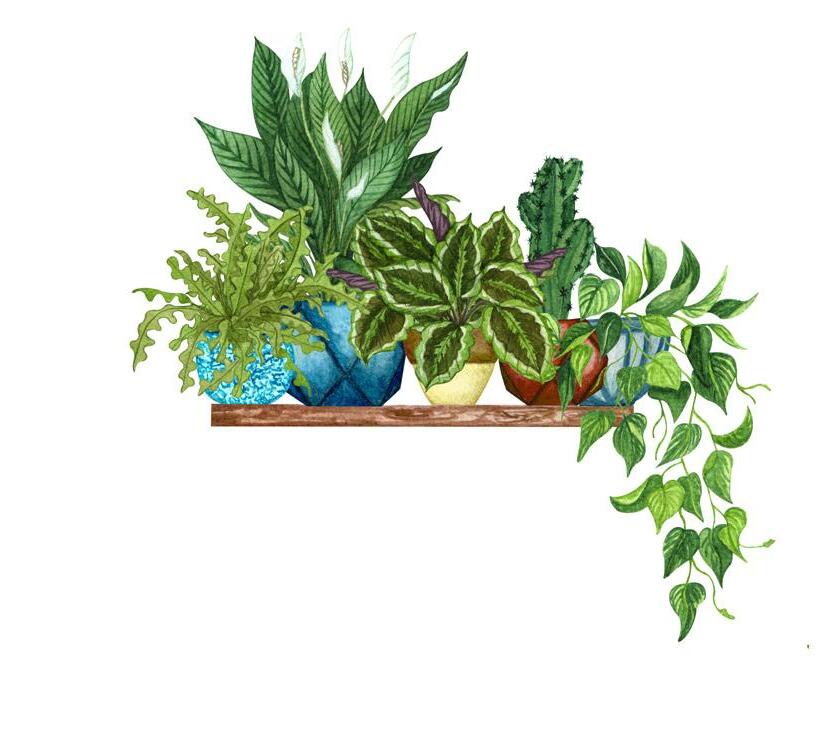
As if this eclectic assembly needed any enhancement, landscape architects still find a way to artfully add focal points as needed or requested, such as fountains and other water features, arches or sculptures. Then there are the creature comforts — this time for human occupants of the garden. People, of course, need pathways to walk on, benches to sit on and other more man-made ways to enjoy the outdoors.
“I love taking familiar materials and using them in an unexpected way or composition,”
Mr. Quinn says of making these elements meld with each garden. “We’ve designed countless fireplaces, pools, kitchen gardens and gates, but the goal is always to make each one unique in its own way.”
MS. BOSWALL LIKES to create some sort of common ground where people can come together — in any way that suits them best. “We often have, in our designs somewhere, a hearth,” she says, which could mean anything from an actual fireplace or pit to a bar-and party set up to a family dining table. “It’s where you gather, it’s where people meet, for that feeling of conviviality and warmth.”
Whether from the hearth, wandering paths through fleeting blooms, admiring sculpted topiaries, harvesting fruits and vegetables or listening to the birds chirp from 100-year-old trees, gardens invite their people to slow down, watch them change and let life unfold. “A garden is a living thing; it’s growing, it’s going to evolve,” Mr. Benech, who has watched the gardens he’s designed grow for many decades, muses. “It’s such a metamorphosis of a place. I love the idea of surprises; I love to see things growing — it’s a question of life.”

